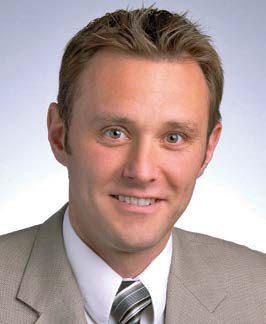Finding Safety And Productivity In the Cloud
PHOENIX—For anyone who doubts the ability of cloud-based systems to handle large-scale broadcast and media production capabilities, recent high-profile localized system failures at the New York Stock Exchange and United Airlines should have them taking notice. Ian Fletcher, chief technology officer for Grass Valley, points to the July 8 failures, when the NYSE shut down for three hours and a computer failure at United Airlines caused havoc with airline schedules, as examples of why broadcasters should be leveraging the security and robustness of cloud-based solutions and not relying solely on internal systems.

Dave Rosen Dave Rosen, vice president, Solutions and Business Development at Sony, thinks the critical question that broadcasters and related media enterprises need to ask is, “What business should I be in?” He explains that public cloud providers have already given businesses across the board an ability to get back to their core competencies. “If I am in the business of making movies, I shouldn’t be building data centers and trying to keep bad guys out,” he said.
INCREASING ACCEPTANCE
Fletcher sees confusion about how cloud and virtualized systems differ as the reason why more companies aren’t turning to the cloud. “A lot of vendors are talking about cloud services in a broad sense,” he said.
A virtualized service is one that is taken offsite to a single location where a software-as-a-service solution takes the service and spreads the processing across multiple locations. He noted a change in the level of acceptance as broadcasters become better educated about the types of systems and their benefits.
“Last year customers were not sure about the technology, but today it is the other way around, with clients and partners asking what we have in the SaaS space,” Fletcher said. He feels the market now demands business agility that only cloud based systems can provide.
WSI, a Boston-based provider of weather systems, is using SaaS to manage its huge amounts of data and deliver only what the client needs. “You have access to more data from a cloud based service than the traditional method of downloading everything locally, whether it was used or not,” said Jim Brihan, director of product management for WSI. He sees an on-demand model replacing the original push model for many data and content-based companies, referring to a new NOAA satellite coming online that could deliver Terabytes of data for his subscribers as an example. The only way to efficiently and cost effectively provide that data is through an on-demand pull model.
So the question arises: How can media companies find the means to focus on their core content creation model, leverage the computing and storage capacity of the cloud, and still provide an acceptable level of security? Jim Martinolich, vice president of integration technologies for ChyronHego, which has been using a cloud-based distribution model for more than five years, thinks cloud-based systems are the future.
Get the TV Tech Newsletter
The professional video industry's #1 source for news, trends and product and tech information. Sign up below.
SECURITY VS. ISOLATION
Today, software continues to take over many of the functions in media production. To manage the business’ hardware and software, SaaS solutions have to create an ecosystem comprising connectivity, computing power, and storage. A private or self-hosted data center is a singular location using a specific number of machines, often with very finite resources and able to only scale to the resources at hand. A public data center like those of Microsoft, Amazon, and IBM are fully scalable and geographically diverse.

Steve Smith Steve Smith, chief technology officer for Cloud Technologies at Imagine Communications in Dallas, explains that true cloud-based services are not hosted by a specific machine but rather by a “something.” This may sound as nebulous as the term “cloud,” but it refers to how a software-based process can run across multiple machines in multiple locations, and is never tied to a specific or singular device or group of devices.
“Cloud providers have the skills and resources to make their platforms robust and secure,” Smith said. “That is what they do and only what they do.” Due to their sheer global size and resources, such providers have the money and staff to create safer data facilities than any singular company could.
Grass Valley’s Fletcher concurs. “Broadcasters used to say ‘if we don’t own or control it, we don’t want it.’ But many now realize that they cannot build a data center as well as Amazon or Microsoft.”
In fact data centers are less a hacking target than media enterprises, as hackers are often looking for the easiest system to get into.
One of the greatest benefits that Sony’s Rosen sees in SaaS is the great equalizer that cloud computing presents. “The smallest company to the largest media conglomerate have the same access and cost for access,” he said. This means that a small company that can’t afford its own IT expert as well as a large corporation that can employ dozens, can share the same level of service and security, evening the playing field in many ways.
BEGINNING WITH A HYBRID
Nevertheless, certain things don’t make sense to do in the cloud, according to Fletcher, who sees high-bandwidth transfers remaining on premise, while taking control and processing services off premise. Systems like WSI’s cloud-based weather system provides users an interface to choose what material and data they need, which is then downloaded locally and played off local hardware. “This allows us to have more data available as we don’t have to push everything to the station,” Brihan said.
This “hybrid model” provides the benefits of leveraging cloud computing for data aggregation, selection and distribution, but keeping the playback locally. Even if the Internet connection is lost the data previously downloaded would all still be available locally and ready to play out.
“The hybrid model will help affect the transition over the next several years,” said Fletcher, adding that his clients’ existing expensive hardware has to phase out over time and allow a phasing in of a newer distribution model.
San Jose, Calif.-based Quantum Corp. is one of the hardware providers for the local data management portion of a Hybrid model. Products like its StorNext line help improve the robustness and security of the localized portion of ingest and playout.
“The cloud can provide huge benefits to broadcasters looking to remain competitive in an increasingly more complext content management and delivery market, said Alex Grossman, vice president, media and entertainment for Quantum. “The virtually unlimited scalability and OPEX-based cost model of public clouds enables broadcasters to adapt to changing needs in their operations, ranging from securely archiving owned content to expanding IP delivery capabilities. By adding cloud services, broadcasters can also swiftly respond to fluctuating demands without making complex technology investments. However, it’s important that the cloud be integrated into existing workflows so content can be managed across local facilities and the cloud.”
THE NEW PARADIGM
“I believe broadcast is dead and we are moving towards a unicast personalized experience,” said Smith. Millennials consume most of their media and entertainment from an on-demand pull model, while older viewers, for the most part, still partake in the tradition push model of broadcast, but that group will eventually phase out. “I think with the spectrum repack we will see some of the smaller broadcasters moving to a pure OTT play,” Smith said.
Aspera, an IBM company, is already supplying SaaS services to broadcasters, especially with sporting events. The functions for big events (broadcast, transcode, distribution) are perfect for the cloud as no capital expenditure is required and the setup and deployment is much faster. “We see a lot of requests for our services for these time-bound events,” said Richard Heitmann, vice president of marketing for Aspera.
In the future, broadcasters who add an OTT model could quickly spin up channels for local or national events with strong social media ties-ins. They could then offer tiered on-demand or live offerings from free content with commercials to commercial free UHD content at a premium. The cloud could enable this by providing a cost-effective and secure way of creating virtual distribution channels when they are needed and provide revenue streams not currently available.
Imagine’s Smith said that businesses like the cloud model with its OPEX versus CAPEX structure. “If a business does not work out they can just shut it down without dealing with ownership of legacy hardware.” This model makes for a more nimble entry and exit into new businesses.
Over time WSI plans to migrate all current products to the cloud and all new ones will be cloud-based. “The handwriting is on the wall, and we are realizing the benefits of SaaS, as are our customers,” concluded Brihan.

